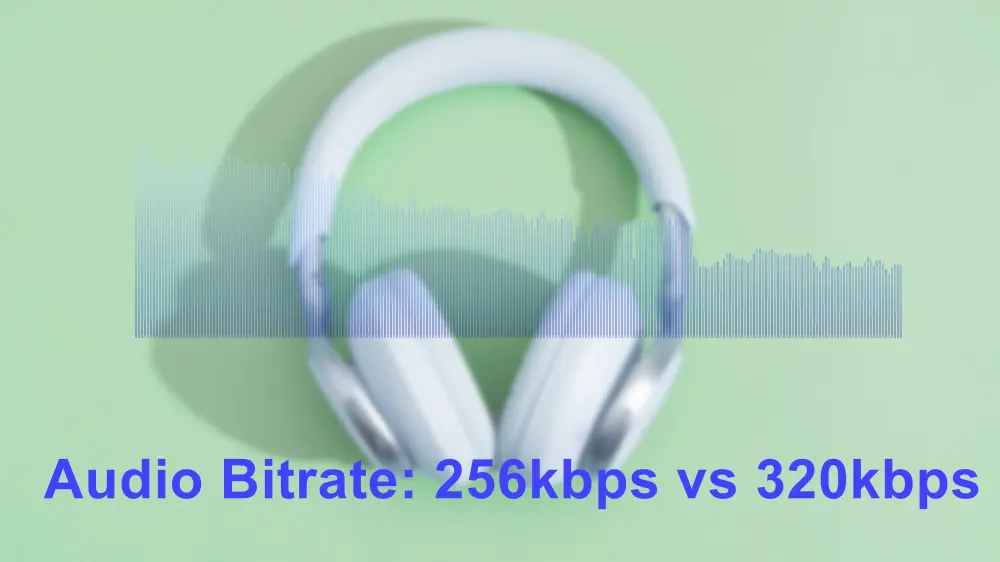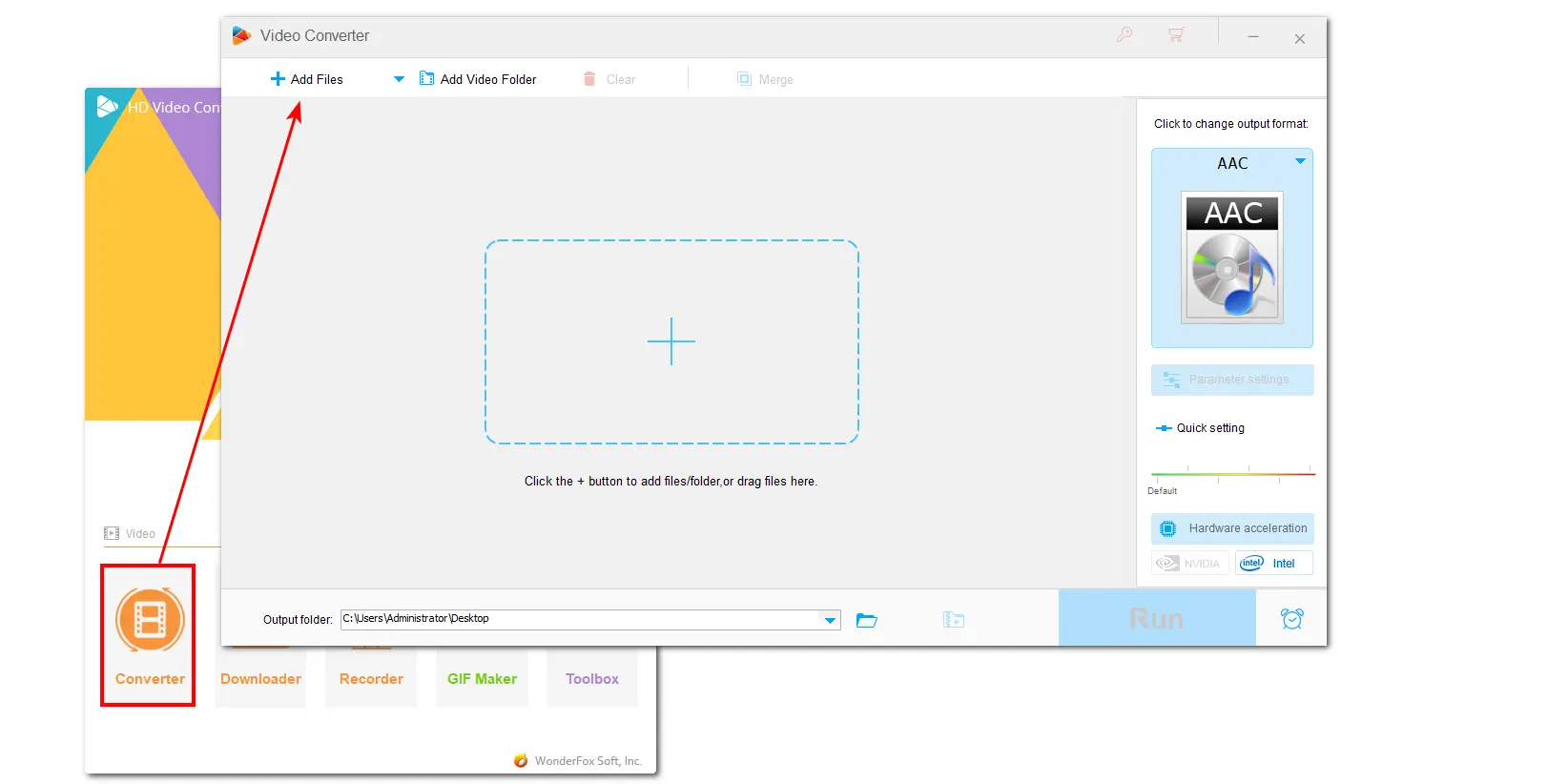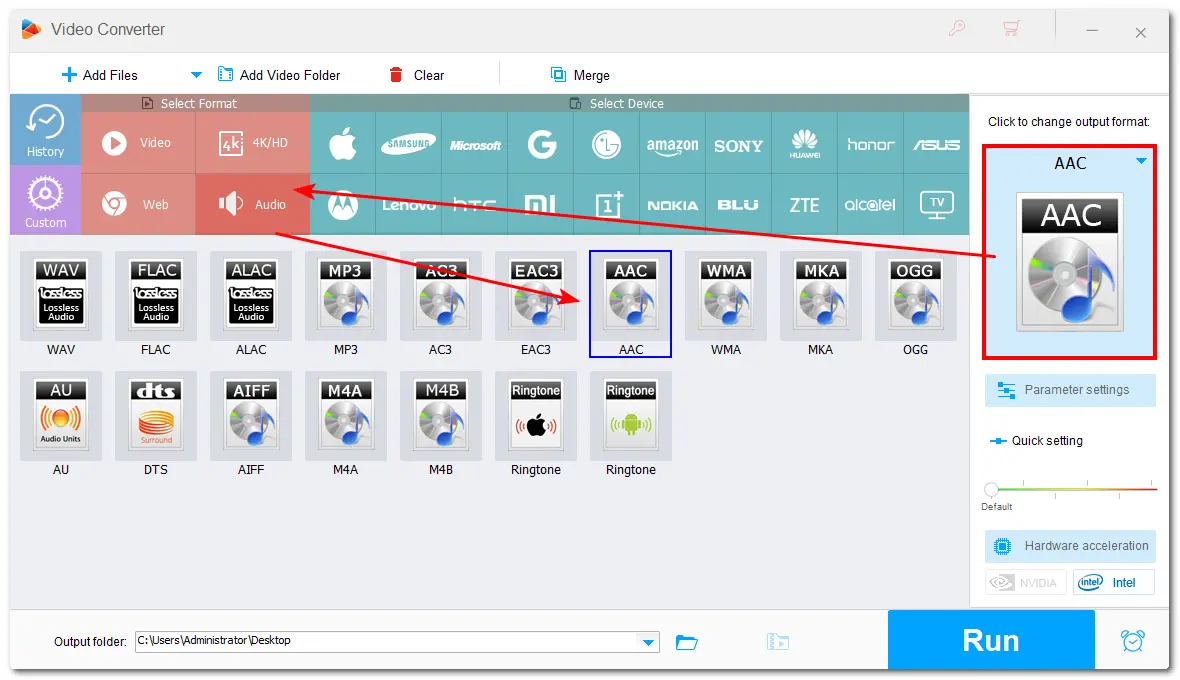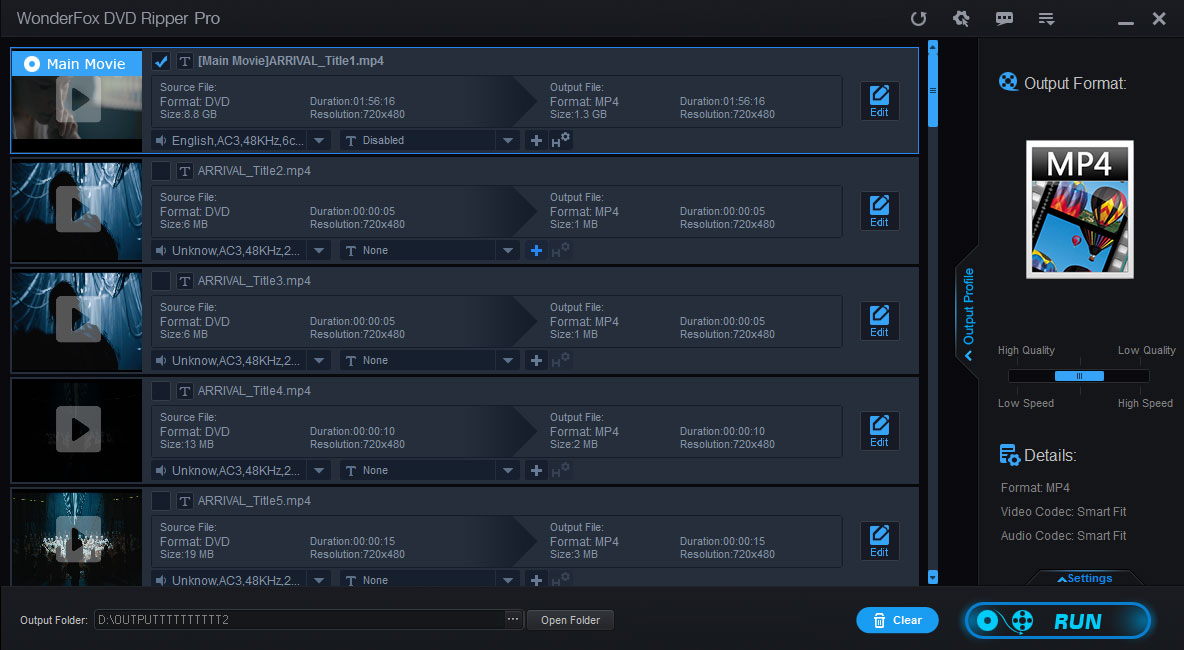Best Audio Processing Tool: WonderFox HD Video Converter Factory Pro

The audio bitrate is an important factor that can affect the audio quality. You may usually find 256kbps and 320kbps bitrate settings when saving or creating an audio file but don't know which bitrate setting is more suitable. No worries! In this article, we will discuss the differences between 256kbps and 320kbps and share tips on when to choose 256kbps or 320kbps for the audio.
Keep reading to learn more information about 256kbps vs. 320kbps.
To learn what 256kbps and 320kbps are, you first need to know what audio bitrate is. As stated previously, audio bitrate is an important factor in determining the audio quality. An audio bitrate is a measurement of how much audio data is processed per second, typically expressed in kilobits per second (kbps). It's essentially the "amount of data" being transferred per second in an audio file.
More audio data is transferred per second; in other words, a higher audio bitrate means better audio quality. And a lower audio bitrate will lead to worse audio quality.
So, 256kbps and 320kbps in an audio file only have the difference in the amount of data being transferred into the file, which means worse or higher audio quality. However, this doesn't mean 256kbps is inferior to 320kbps in all aspects. Actually, both of them are generally considered acceptable for most listeners. You can choose 256kbps or 320kbps for the audio according to your indeed situation.
If you want to know which audio bitrate is better for your condition, continue reading to learn the comparison of 256kbps and 320kbps.
🎨 Audio Quality: From the information we provided earlier, it is clear that 320kbps will have better audio quality than 256kbps. However, for average users who are not audiophiles, it’s hard to hear the difference in audio quality between 256 kbps and 320 kbps. But if you want higher sound quality, just choose 320kbps when creating or saving an audio file.
🎨 Audio File Size: Since high-bitrate audio will need more data to encode the audio, it’s not hard to know that the higher the audio bit rate, the larger the file size. So, for audio files of the same length and format, the 320kbps audio file will be larger than the 256kbps audio file. If you have limited storage space for storing multiple audio files, 256kbps may be a better choice.
In short, 256kbps and 320kbps can both offer good quality for most people. But if you want to make the best choice between 256kbps and 320kbps, let's see the pros and cons of the two bitrates.

256kbps
Pros:
Cons:
320kbps
Pros:
Cons:

Tips. 256kbps AAC vs 320kbps AAC & 256kbps MP3 vs 320kbps MP3
After knowing the difference between 256kbps and 320kbps, when comparing 256kbps AAC to 320kbps AAC, it’s not hard to configure that 320kbps AAC will have better audio quality since it has higher bitrate. Also, 320kbps AAC file will be larger in size compared to 256kbps AAC file. This also applies to 256kbps MP3 vs 320kbps MP3.
For the same format and without changing other audio settings, the higher the audio bitrate, the better the audio quality, but the larger the audio file will be. However, you may not be clear about the quality offered by AAC 256kbps and MP3 320kbps encoding formats.
Actually, since 256kbps and 320kbps are both high audio bitrates for lossy audio formats, the difference between AAC 256kbps and MP3 320kbps is negligible. But it's widely accepted that MP3 320kbps offers better audio fidelity that can capture more details and nuances in the audio but is larger in file size due to the higher bitrate.
AAC 256kbps keeps a good balance between audio fidelity and file size, but it also offers good audio quality for most people. You can make some copies from the audio of the two formats and bitrates and see which sound is better for you. If you cannot hear the difference, just choose one according to your storage space. Otherwise, you can select the higher MP3 320kbps one.
Moreover, there is another difference between the AAC and MP3 formats - compatibility. MP3 has the best compatibility among all audio formats. Although AAC is also accepted by most devices and platforms, it still lacks device support compared to MP3. So when faced with the choice between AAC 256kbps and MP3 320kbps, you can also consider compatibility.

From the above, you can see that the quality of 256kbps and 320kbps is not much different. When to choose 256kbps or 320kbps just depends on your listening conditions and device. Moreover, you can also change the bitrate of a music file to adjust the audio quality and file size.
WonderFox HD Video Converter Factory Pro is a powerful video/audio processing tool with an audio bitrate converter. With it, you can easily change the audio bitrate between 256kbps, 320kbps, and more while maintaining good quality. It features a batch conversion mode that can change the bitrate of multiple files in bulk while at a fast speed.
As a professional video converter, it supports almost all video and audio formats that allow you to change the bitrate of MP3, AAC, M4A, Ogg, WAV, FLAC, ALAV, AIFF, etc., and make conversions between these formats. You can also use it to convert video files and change the video and audio bitrate in a video.
Moreover, it also features a downloader, recorder, GIF maker, and more practical utilities.
Let's see how to convert audio bitrate to 320kbps, 256kbps, and more with WonderFox HD Video Converter Factory Pro. Download this tool here now!
Launch HD Video Converter Factory Pro after the installation and open the "Converter" module. Click "+ Add Files" to import the audio files.

Click the format image on the right side to open the output format library. Go to the "Audio" tab and select the desired audio format.

Open the “Parameter settings" window under the format image. Then, go to the "Audio settings" section to find the "Bit rate" option. Expand the bitrate drop-down menu to select a bitrate setting or customize the bitrate. Click "OK" to save your change.
The above is all I want to share with you about the comparison between 256kbps and 320kbps. Actually, 256kbps and 320kbps can both offer good audio quality for most listeners who are not audiophiles. If you have the space and a good headphone or speaker, you can select 320kbps. For audio playback on a mobile phone or other portable devices, 256kbps is a good option.
If you need to make bitrate conversions for saved music files, WonderFox HD Video Converter Factory Pro can help you change the audio bitrate while keeping a good balance between the audio quality and file size.
Thanks for reading till the end. Have a nice day!
Yes. 320kbps is generally considered to offer high quality for lossy audio formats like MP3, AAC, etc. It will sound pretty much the same as the CD quality and is supported by most social media platforms.
Yes. Kbps is an indicator of the audio quality and file size. For two files with the same formats and other audio settings, a higher kbps means more data being transferred per second, which will offer more details in an audio file, thus generating a higher quality audio file. But there is no need to pursue much higher quality under the average listening conditions.
Yes. For most listeners, a bit rate of 256kbps is generally considered acceptable. AAC 256kbps offers enough audio quality while in a smaller file size, making it suitable for listening through streaming services and portable devices.
This depends on your actual needs. WAV is a lossless audio format that can retain all the original audio data and generally has a bitrate of 1,411kbps at 16 bits, while MP3 is a lossy audio format that only supports the highest bitrate up to 320kbps.
To pursue higher audio quality, WAV is better than MP3 320kbps.
For the audio file size, MP3 320kbps is smaller than WAV for two same-length audio files.
Under average situations, a 256kbps-320kbps MP3 is enough to offer good quality for listening to music. If you just want to listen to some speech content or audiobook, 128kbps and 192kbps are also great bitrates for casual listening.
WonderFox
DVD Ripper Pro
WonderFox DVD Ripper Pro is a professional DVD ripping program that can easily rip any DVD, be it homemade or commercial, to all popular formats and device presets including MP4, MKV, MP3, WAV, H264, H265, Android, iPhone, etc. without a hitch. It also lets you edit and compress DVD videos at high efficiency. Download it to enjoy a fast and trouble-free DVD ripping experience.

Terms and Conditions | Privacy Policy | License Agreement | Copyright ? 2009-2025 WonderFox Soft, Inc. All Rights Reserved.